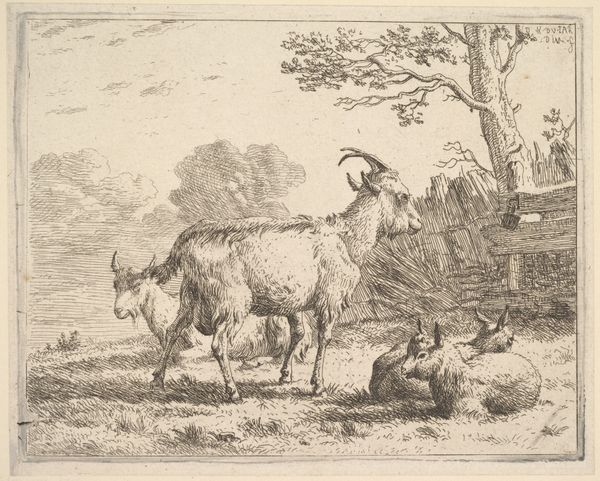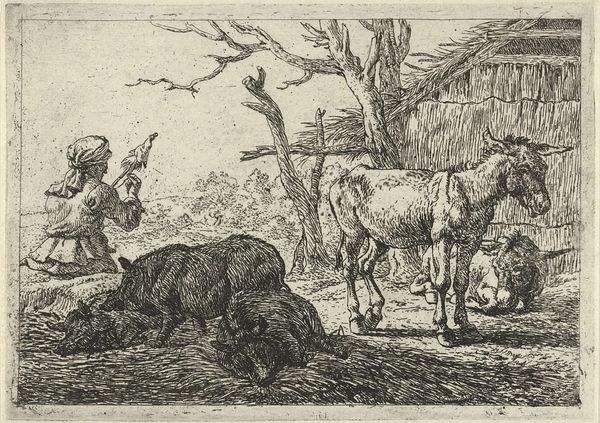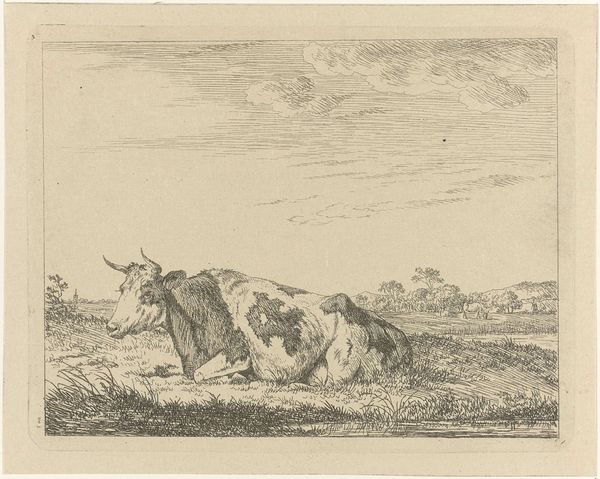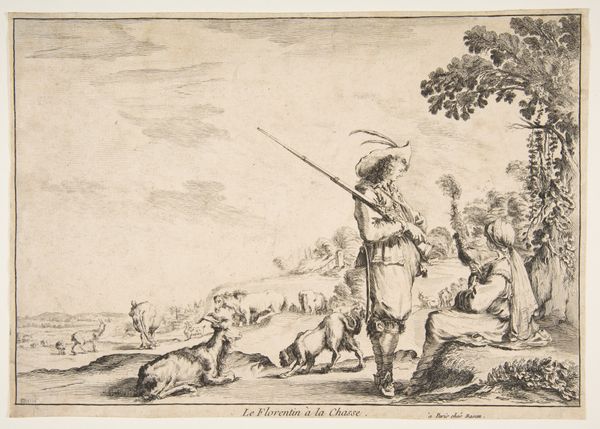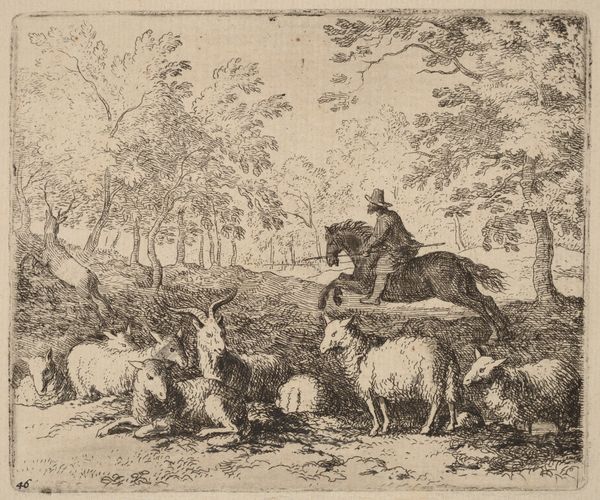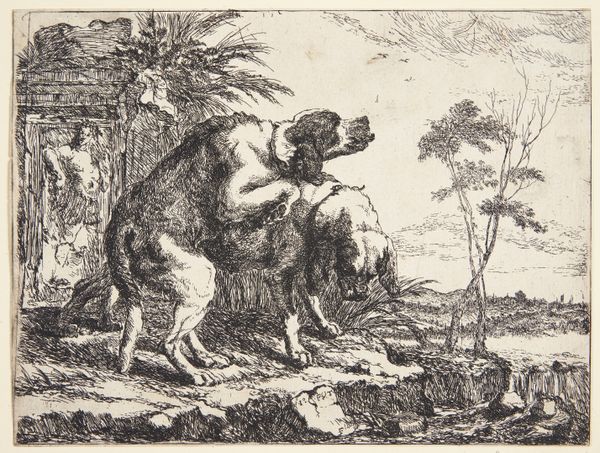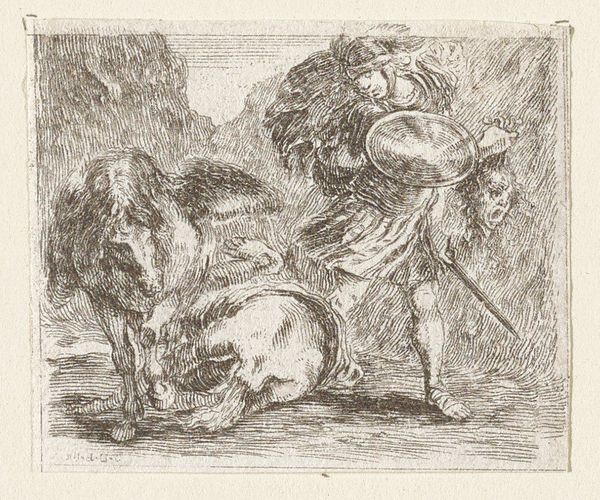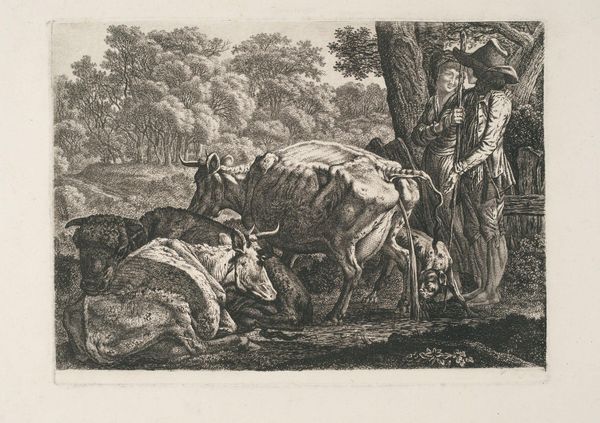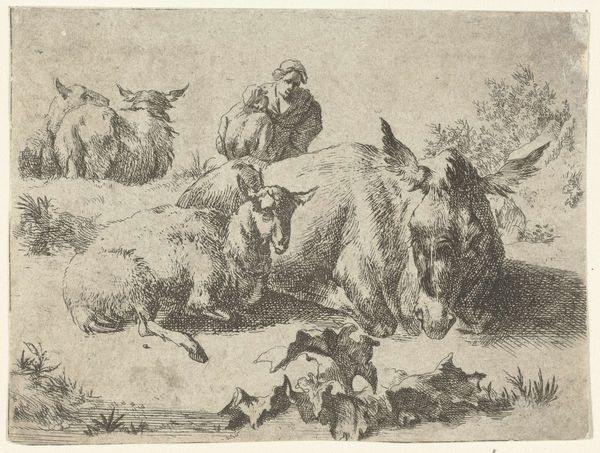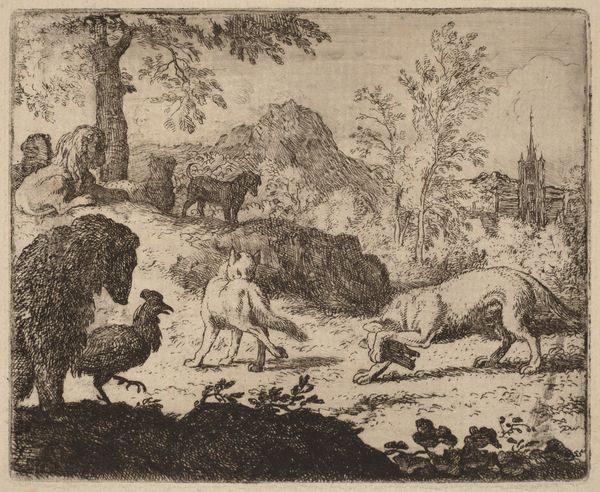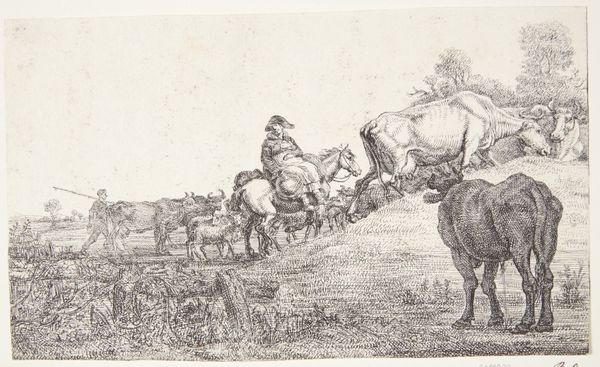
Cow, adult sheep, and young sheep lying in the grass; beyond, a shepherd stands partially behind a tree 1656
0:00
0:00
drawing, print, etching
#
drawing
#
baroque
#
dutch-golden-age
# print
#
etching
#
landscape
#
figuration
#
genre-painting
Dimensions: plate: 5 7/16 x 7 5/16 in. (13.8 x 18.5 cm) sheet: 6 7/16 x 9 7/8 in. (16.3 x 25.1 cm)
Copyright: Public Domain
Editor: So this is "Cow, adult sheep, and young sheep lying in the grass; beyond, a shepherd stands partially behind a tree," an etching by Karel Dujardin from 1656. It's a pretty straightforward scene, but there's something about the shepherd almost hiding that feels a bit unsettling. How do you interpret this work? Curator: I find Dujardin's rendering of the Dutch pastoral landscape here, despite its apparent tranquility, actually operates as a loaded commentary on class and labor. The shepherd, nearly obscured, highlights the invisibility of the working class that sustains this idyllic scene. Editor: Invisibility? I hadn't thought of it that way. Curator: Consider how frequently depictions of rural life conveniently omit the realities of labor exploitation inherent in agricultural systems of the time. The art historical canon tends to valorize owners instead of depicting the lives of the marginalized workers whose labor created that wealth. Dujardin shows a farm and a peaceful day but still obscures who does the hard work. Editor: I see what you mean. It’s a quiet disruption, then? Curator: Exactly. The very act of depicting the shepherd in this manner can be seen as a subtle act of resistance against idealized and sanitized versions of pastoral life which effectively erased the contributions – and sufferings – of those who toiled within it. This tension reminds us to interrogate the power dynamics inherent in seemingly bucolic representations. How does the background influence our perception, for example? Editor: Knowing that, I notice the background houses looking pretty grand compared to this humble pasture. This tension makes you reconsider it all. Thanks. Curator: And it underscores the enduring relevance of art history as a lens for critically examining social inequalities.
Comments
No comments
Be the first to comment and join the conversation on the ultimate creative platform.
